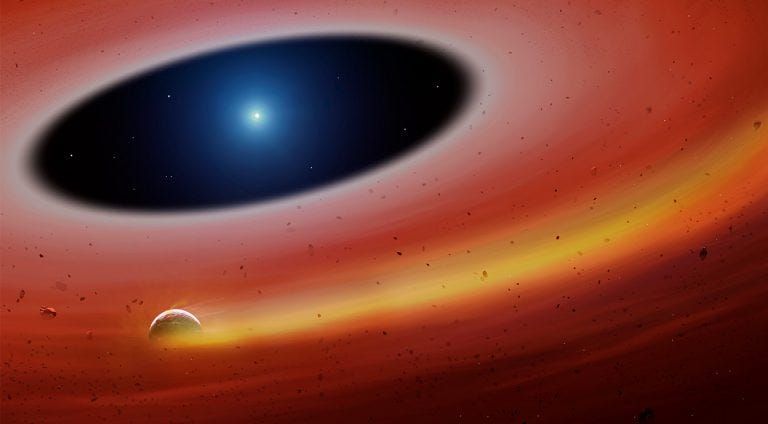A Glimpse into Earth's Future: Insights from a Distant Exoplanet
Written on
Chapter 1: Earth's Bright Present and Dismal Future
Currently, Earth is basking in the prime years of the sun's life cycle, but this golden star will not shine indefinitely. Eventually, the sun will lead to Earth's demise, transforming our planet into a lifeless remnant orbiting a dead celestial body. Astronomers have identified a remote star system that may serve as a harbinger of Earth's eventual fate—a white dwarf star accompanied by the remnants of a destroyed planetary core.
Stars such as our sun have lifespans that span billions of years. At an age of 4.6 billion years, our sun is considered middle-aged. Its state has remained relatively unchanged for the past four billion years, and it is expected to maintain this stability for another four to five billion years. However, its energy output will gradually rise, rendering Earth increasingly inhospitable within the next billion years. The real transformation will occur in roughly five billion years, when the sun exhausts its hydrogen and swells into a red giant, leading to Earth's destruction—albeit not in the way we might anticipate.
This fate has already befallen the star known as SDSS J122859.93+104032.9, located 410 light years from us. This star is classified as a white dwarf, representing an ultra-dense stellar core composed of “electron-degenerate matter,” which remains after the outer layers of a star are expelled into space. The immense gravitational pressure in a white dwarf like J122859 compresses matter to the point where it can be the size of Earth but contain 70 percent of the sun's mass.

Chapter 2: The Study of a Dying Star System
Astronomers conducted an investigation into this star system using the Gran Telescopio Canarias (GTC), which has a diameter of 34.1 feet (10.4 meters) and is located in the Canary Islands. The research team found that the remnants of the planetary core measure approximately 370 miles (600 km) in width and possess a density of at least 7.7 grams per cubic centimeter. If it were less dense, the gravitational pull of the star would have disintegrated it, as it orbits extremely closely—completing a revolution every 123 minutes. The attributes of this core are akin to those of Earth's iron core, leading researchers to conclude that it is the remnant of a once intact planet. This finding implies that dying stars may not obliterate their planets entirely; rather, they could fracture them, leaving behind dense cores.
The team utilized a spectroscopic method to detect the planetary core surrounding J122859, which, while less precise than the transit method used by the Kepler spacecraft, can be applied to a wider range of celestial bodies. There are six additional known white dwarf systems that may also harbor detectable planetary cores.
The first video titled "A New Super Earth is COMING! NASA Revealed New Discovery!" explores recent findings about a super Earth that could reshape our understanding of exoplanets and their potential for habitability.
The second video, "JWST discovers NEW PLANET - it's the coldest, oldest exoplanet ever imaged," discusses the James Webb Space Telescope's groundbreaking discovery of an ancient exoplanet, providing insights into the diversity and evolution of planetary systems.
Now read: Bizarre 4-Star System Forms Planets in a Vertical Disk Orbit; ‘Nuclear Pasta’ Inside Neutron Stars Is Strongest Material in Universe; NASA Prepares to Launch Super-Fast Probe to Enter Sun’s Corona
Originally published at www.extremetech.com on April 8, 2019.